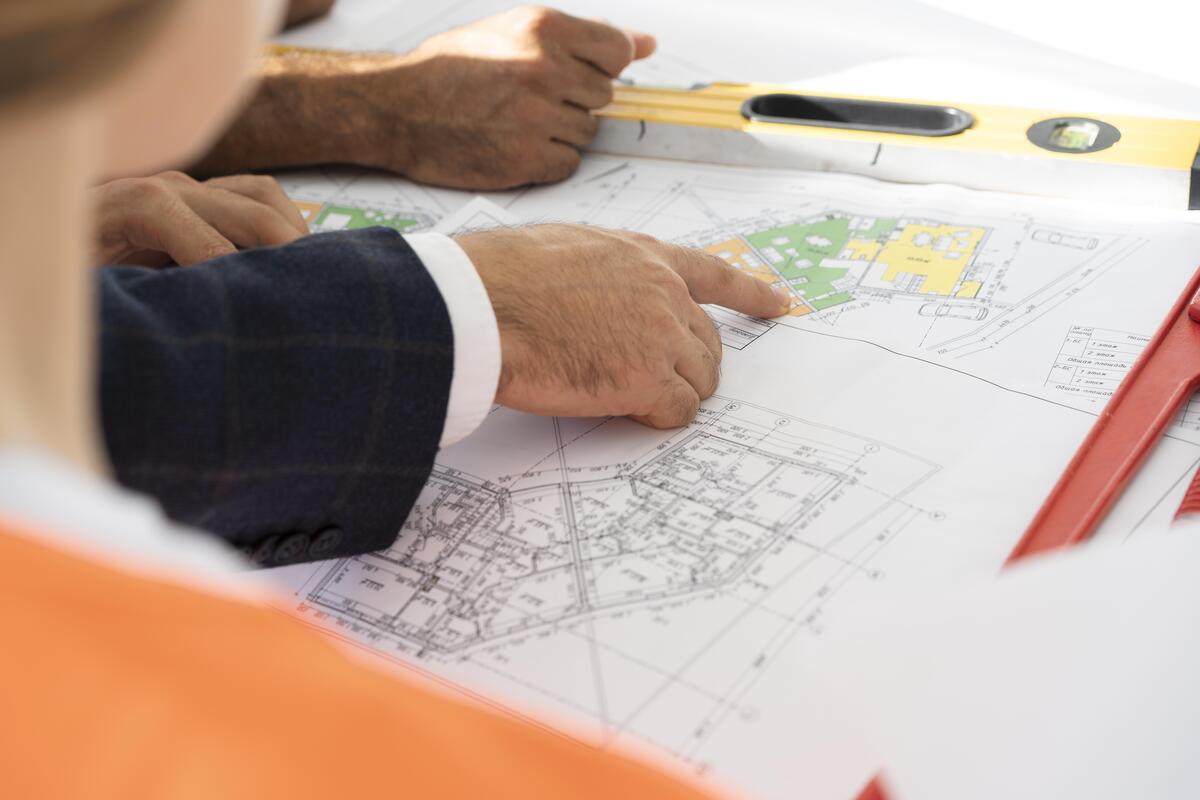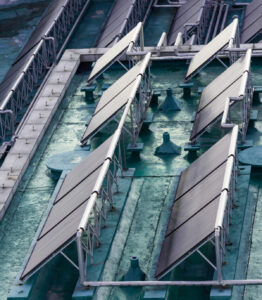Exclusive Neuroject Article: In an industry where success hinges on the precise orchestration of numerous elements, maintaining a vigilant eye on every detail can be a formidable challenge. This comprehensive guide dives into the world of Construction Monitoring Solutions, a technological advancement that has revolutionized the construction industry. Whether it’s enhancing project efficiency, mitigating safety risks, or ensuring adherence to time and budget constraints, these solutions provide a way to navigate the complexities of construction projects with unprecedented ease.
A reliable and efficient technique to assess the caliber, precision, and advancement of a construction project is through construction monitoring. To provide you total project control, our specialized teams will supervise every facet of construction that your due diligence process uncovered and will provide reports, updates, and guidance.
With construction monitoring, you can keep a close eye on the status of your project and take proactive measures to resolve issues before they become serious ones. We can assist you with installing and maintaining real-time monitoring solutions to improve your project management even more by drawing on our extensive global experience and knowledge.
Regardless of your familiarity with this subject, we invite you to explore the myriad of ways these solutions are shaping the future of construction management, enabling stakeholders to make more informed, data-driven decisions, and ultimately, realize their project goals more effectively.
Table of Contents
What is Construction Monitoring?
Construction monitoring refers to the process of overseeing and managing construction projects to ensure their successful completion within budget, schedule, and quality requirements. It involves constant surveillance, assessment, and documentation of the project’s progress, from the initial stages of planning and design to the final stages of construction and handover.
A crucial aspect of construction monitoring is worker monitoring solution, which involves the implementation of advanced technologies and systems to track and manage the activities of construction workers on-site. With the help of worker monitoring solutions, project managers and supervisors can gain real-time insights into the productivity, safety, and efficiency of the workforce.
Worker monitoring solutions utilize various tools such as wearable devices, tracking systems, and video surveillance to monitor the movements and activities of construction workers. These technologies enable project managers to ensure that workers are following safety protocols, adhering to the project schedule, and using equipment and materials efficiently. Additionally, worker monitoring solutions provide valuable data and analytics that can be used to identify areas for improvement, optimize resource allocation, and enhance overall project performance.
By implementing worker monitoring solutions, construction companies can significantly enhance their project management capabilities. Real-time monitoring allows for immediate response to any issues or delays, reducing the likelihood of costly rework and project overruns. Moreover, improved worker accountability and performance can lead to increased productivity and better utilization of resources.
However, it is important to strike a balance between worker monitoring and privacy concerns. Construction companies must ensure that the data collected is used solely for project management purposes and that workers’ privacy rights are respected. Clear communication and transparency are essential in gaining workers’ trust and cooperation in the implementation of monitoring systems.
In conclusion, construction monitoring, with its focus on worker monitoring solutions, plays a vital role in ensuring the success of construction projects. By embracing technology and leveraging data-driven insights, construction companies can improve project efficiency, safety, and overall performance, leading to successful project outcomes.

What is the Importance of Construction Monitoring?
The fast-paced and dynamic nature of construction projects necessitates a rigorous and effective monitoring system. Without this, unforeseen challenges can cause significant delays, cost overruns, and compromise the quality and safety of the final structure. This article explores the importance of effective monitoring in construction projects and outlines the key considerations for implementing such a system.
Firstly, monitoring allows for the effective management of resources. With various parties involved – from architects to subcontractors – effective coordination is vital. A robust monitoring system ensures that everyone adheres to their respective schedules and utilizes resources efficiently, thereby reducing waste and maximizing productivity. It also helps in managing the supply chain, minimizing the risk of delays caused by late deliveries or inadequate stock.
Secondly, quality control is a crucial aspect of monitoring. Ensuring that materials and workmanship meet the required standards is essential to prevent potential issues down the line. Poor-quality materials or substandard work can lead to serious problems, from project delays to structural failures. Regular checks and balances, underpinned by a diligent monitoring system, can help avert such issues.
Thirdly, safety is a paramount concern in construction projects. Inadequate safety measures not only put workers at risk but can also lead to legal repercussions and damage the reputation of the companies involved. Therefore, a strong monitoring system is vital for enforcing safety standards, identifying potential hazards, and implementing corrective actions.
Moreover, effective monitoring contributes to financial control. Construction projects often involve significant expenditures, and poor financial management can lead to cost overruns and project failure. Regular budget checks and accurate cost forecasting, facilitated by effective monitoring, can help keep the project within the defined budget parameters.
Finally, monitoring provides valuable data that can be used to improve future projects. This data can inform better decision-making, improve efficiency, and contribute to the development of best practices within the industry.
In conclusion, effective monitoring in construction projects is not a luxury, but a necessity. It ensures that resources are well-managed, quality and safety standards are upheld, finances are controlled, and lessons are learned for future projects. With the advent of modern technologies, such as IoT, AI, and data analytics, there are now more opportunities than ever to implement sophisticated monitoring systems that can further enhance the efficiency and success of construction projects.

Suggested article for reading: AI in Construction
How to Make a Successful Construction Site Monitoring?
Creating a successful construction site monitoring system requires a blend of technical expertise, legal knowledge, creativity, ethical responsibility, and effective communication. The goal is to identify potential problems and errors both before and during the project to prevent non-compliance with design or technical standards. One key component of a successful site monitoring strategy is the worker monitoring solution.
A worker monitoring solution is an integral part of an efficient construction site monitoring system. It is a tool that helps maintain safety and productivity at the construction site by keeping an eye on the daily operations and activities of workers. It provides real-time data about the performance and efficiency of workers, which is invaluable in ensuring the smooth running of the site. It can detect any deviations from standard procedures, thereby facilitating swift correction of errors.
The person or team in charge of site monitoring must possess technical skills in directing, communicating, and delegating tasks. An in-depth understanding of the construction process, architectural design, and structural engineering principles is essential to effectively coordinate activities among decision-makers, developers, contractors, and suppliers.
Furthermore, knowledge of legal aspects related to construction is crucial. This guarantees the safety of the workers by ensuring that the site adheres to all relevant laws and regulations. Ignorance is not an excuse in legal matters, and any lapses can lead to significant consequences including penalties and delayed completion of the project.
Creativity is another critical attribute needed for successful site monitoring. Construction projects often encounter unexpected issues, and the ability to develop fast, effective solutions is vital. This necessitates innovative thinking and the ability to adapt to changing circumstances.
Finally, a successful construction site monitoring system must be built on a strong sense of ethics, transparency, and accountability. This ensures that all stakeholders can trust the process and results, fostering a culture of openness and integrity. Every action taken should be justifiable and accountable, maintaining high standards of ethical conduct at all times.
In conclusion, creating a successful construction site monitoring involves having the right skills, knowledge, tools, and attitudes. By implementing an effective worker monitoring solution and adhering to the key principles of communication, creativity, legal awareness, and ethical responsibility, construction projects can be carried out more efficiently, safely, and successfully.
Technologies Powering Modern Construction Monitoring Solutions
In the current era, we are witnessing a remarkable technological revolution that’s shaping industries across the globe, and the construction sector is no exception. Emerging technologies are increasingly being deployed to optimize construction monitoring solutions, ushering in a new wave of efficiency, safety, and sustainability.
The traditional approach to construction monitoring, based on manual inspections and record-keeping, has proven to be time-consuming, error-prone, and costly. With the advent of modern technologies, however, these limitations are steadily being overcome. Four critical technologies are particularly transforming this field: Internet of Things (IoT), Artificial Intelligence (AI), drone technology, and Building Information Modeling (BIM).
The Internet of Things offers exceptional potential for real-time monitoring and data collection. IoT sensors placed around the construction site can monitor variables such as temperature, humidity, and vibrations, delivering data that can help predict and prevent structural failures. Moreover, these sensors can track worker movements to enhance safety, or monitor equipment usage to improve maintenance schedules.

Artificial Intelligence is another game-changing technology. It can analyze vast amounts of data from IoT sensors, identify patterns, and make predictions, thus enabling proactive decision-making. Machine learning, a subset of AI, can predict potential risks and alert the necessary personnel, thereby preventing accidents before they occur.
Drones, or unmanned aerial vehicles (UAVs), provide a bird’s-eye view of construction sites, allowing for rapid site inspections, accurate surveys, and progress tracking. They provide high-quality imagery and videos, which can be analyzed by AI for further insights.
Suggested article for reading: The Importance of Drones in Construction
Lastly, Building Information Modeling is a comprehensive approach to construction planning and monitoring. BIM integrates 3D modeling with time and cost-related information, providing a detailed and accurate view of the project. It facilitates collaboration, improves efficiency, and reduces the chances of error.
In conclusion, these technologies are creating a paradigm shift in the construction industry, turning it into a more efficient and safe sector. By embracing these technologies, construction companies can not only monitor their projects better but also save significant time and resources. The future of construction monitoring is digital, and the future is here.
Real-Time Data Acquisition in Construction Monitoring
In the contemporary construction industry, real-time data acquisition has emerged as a pivotal element for efficient construction monitoring. This advanced process facilitates the consistent capture of data about multiple site parameters, offering an expedited analysis and insights into the ongoing construction activities.
At the heart of real-time data acquisition is a network of interconnected devices and sensors, which continuously collect data from the construction site. These devices can be integrated into machinery, materials, and even workers’ helmets or vests, depending on what data is deemed essential. The collected data is then relayed to a centralized system or cloud-based platform, enabling it to be processed and analyzed in real-time.
One significant benefit of real-time data acquisition is the ability to detect and rectify issues immediately. For example, in the event of a safety incident, sensors can instantaneously notify the project management team, thereby reducing the time taken to respond and mitigate potential hazards. This functionality not only enhances safety measures but also increases overall efficiency, minimizing project delays and cost overruns.

Furthermore, real-time data acquisition enables accurate performance tracking. Key performance indicators (KPIs), such as equipment utilization rate or labor productivity, can be monitored in real-time, offering an unprecedented degree of project control and management. This transparency allows for immediate adjustments and corrective actions, thereby ensuring project objectives are met effectively.
In addition, real-time data acquisition systems provide the ability to predict potential failures or delays. By employing machine learning algorithms and predictive analytics, these systems can forecast future outcomes based on current and historical data. This predictive capability facilitates proactive decision-making, averting potential crises before they materialize.
However, the successful implementation of real-time data acquisition in construction monitoring is not without its challenges. These include the integration of various data sources, data security, and the necessity for robust infrastructure to handle vast amounts of data. Therefore, a thoughtful selection of technologies and careful planning are crucial for effective real-time data acquisition.
In conclusion, real-time data acquisition has become an invaluable tool in construction monitoring, contributing significantly to increased safety, efficiency, and predictive capabilities. Despite its challenges, the benefits are substantial, making it a key technology in shaping the future of the construction industry.
Risk Assessment and Mitigation with Construction Monitoring
In today’s rapidly evolving construction industry, the role of risk assessment and mitigation, particularly through the use of construction monitoring, cannot be overstated. This strategy combines diverse technology-driven methodologies, ensuring the safe, efficient, and successful completion of projects.
Risk assessment is an integral part of any construction project. This process involves identifying, quantifying, and managing potential risks that could significantly impact project execution. These risks range from budget and time overruns, technical difficulties, and safety issues, to unpredictable natural phenomena. The successful completion of a project hinges on a comprehensive risk assessment, forming the backbone of robust project management strategies.
Mitigation is the subsequent step, presenting solutions to reduce or eliminate potential risks. Strategies might include reallocating resources, implementing alternative construction methods, adjusting timelines, or improving safety measures. Through effective risk mitigation, projects are less likely to be delayed or incur unexpected costs, resulting in a more efficient and cost-effective operation.
Construction monitoring plays a pivotal role in both of these processes. Utilizing advanced technology tools like drones, sensors, AI, and machine learning, construction monitoring offers a real-time view of the project, enabling swift response to emergent issues.
Drones, equipped with high-resolution cameras and LIDAR technology, provide a bird’s-eye view of the site, offering detailed imagery for project assessments. They can access areas challenging for humans, improving safety and reducing risk.
Sensors embedded within construction materials monitor their conditions, providing data about potential structural weaknesses or changes due to weather conditions. This information assists in making informed decisions to prevent structural failures.
AI and machine learning, when integrated with these technologies, amplify their capabilities. They help analyze the vast data obtained, flagging anomalies, predicting risks, and suggesting mitigation strategies. For example, machine learning algorithms can predict weather patterns and their possible impact on construction schedules, suggesting adjustments to mitigate these risks.
In conclusion, risk assessment and mitigation, supported by construction monitoring, are critical to the successful execution of construction projects. By leveraging technology, we not only manage risks effectively but also enhance overall project efficiency and safety. As the construction industry continues to innovate, it’s clear that these strategies will remain at the forefront of project management best practices.

Remote Construction Monitoring: The Future of Construction
Remote Construction Monitoring (RCM) signifies a radical shift in the future of construction, blending traditional practices with cutting-edge technology. This evolution revolutionizes not just the construction processes, but also the management and supervision aspects, creating a symbiotic integration that optimizes time, resources, and workforce productivity.
Traditionally, construction projects necessitate a hands-on approach, requiring extensive physical oversight. However, with RCM, project management is taking a digital turn. Advanced technologies like the Internet of Things (IoT), drones, Artificial Intelligence (AI), and machine learning enable real-time data gathering and analysis from construction sites.
These technologies provide comprehensive visibility into every corner of the construction project. Drones can capture aerial imagery, giving a bird’s-eye view of the progress. AI algorithms can then interpret this imagery, flagging potential issues, delays, or safety hazards. The IoT sensors installed on machinery and materials can monitor equipment usage, material stocks, and even environmental conditions, such as temperature and humidity, crucial in certain construction phases.
In essence, RCM provides a continuous, data-driven narrative of the construction progress, replacing periodic site visits and meetings with instantaneous access to real-time data. This shift to digital monitoring opens the door to predictive analytics, empowering construction teams to foresee potential issues, plan contingencies, and make informed decisions to maintain the project’s trajectory.
RCM’s advantages extend beyond operational efficiency. It has significant implications for worker safety. With RCM, safety inspections can occur more frequently, and potential hazards can be identified and rectified promptly. Consequently, it reduces the risk of accidents and enhances the overall safety culture within the construction industry.
Environmental sustainability, another key area, benefits from RCM. By optimizing resource allocation and reducing waste, RCM promotes sustainable construction practices. The ability to monitor energy use also helps construction projects align with green standards.
However, like all technological advancements, RCM also poses challenges. Cybersecurity is a prime concern, given the volume of sensitive data involved. Also, the initial setup cost and the need for training the workforce to adapt to this new system are potential hurdles.
Despite these challenges, the transformation that Remote Construction Monitoring brings to the construction industry is undeniable. By promoting transparency, efficiency, and safety while reducing waste, RCM is indeed the future of construction. It serves as a powerful reminder of how technology can redefine traditional industries, reshaping the way we build our world.

Case Study of TokenMe: Successful Implementation of a Construction Monitoring Solution
TokenMe, a comprehensive system utilizing smart badges and helmet tags known as tokens, captures data relating to users’ location, motion, and timing. These petite yet powerful tokens, measuring only 45x45x12 millimeters, are engineered to have a formidable range of up to 50 meters, further supplemented by an impressive 500-day battery lifespan.
These tokens transmit the captured data to strategically located devices called anchors, facilitating the smooth tracking and monitoring of personnel and visitors on-site. The anchors, larger than the tokens at 150x66x42 millimeters, boast a superior coverage range of up to 500 meters. These devices are outfitted with cutting-edge sensors capable of detecting changes in temperature, humidity, air quality, and movement.
On entering the 80-hectare hospital construction site in Odense, Denmark, a project overseen by TokenMe, one can instantly appreciate the integration of innovative technology. Workers on the site are adorned with tokens enabled with Bluetooth and Ultra-Wideband (UWB) technology. As these workers traverse the construction site, data from their tokens is relayed to the strategically placed anchors.
These anchors, evenly distributed around the site and armed with a suite of sensors including motion and temperature detectors, provide continuous surveillance. This real-time monitoring ensures the safety of the workers and their environment as they carry out their tasks. Should a worker fall, the sensor-equipped helmet promptly detects the incident, triggering an immediate alert.
The transmitted data is then relayed to a cloud database. Here, an AI engine processes and interprets the information, presenting it in a dashboard format for project managers and other stakeholders. This dashboard, rich with data, provides graphical representations, visuals, and insights into task completion and personnel movement. This proactive approach to monitoring ensures an added layer of safety and efficiency on the construction site.
Integration with Building Information Modeling (BIM)
In the ever-evolving landscape of construction, the integration of Building Information Modeling (BIM) with construction monitoring has emerged as a transformative strategy. BIM, a comprehensive digital representation of a construction project, becomes exponentially more powerful when paired with real-time monitoring technologies. This integration brings a new level of precision, efficiency, and foresight to the construction process.
Understanding the Interplay
BIM serves as the digital backbone of a construction project, encompassing its entire lifecycle from conception to operation. It involves intelligent 3D modeling that captures not only the visual aspects of the project but also the associated data and metadata. This includes details about materials, schedules, costs, and more. On the other hand, construction monitoring involves the continuous observation and collection of data related to project activities, progress, and performance.
Leveraging BIM for Monitoring
Real-time Visualization: Integrating BIM with monitoring technologies allows stakeholders to visualize the construction site in real-time. This goes beyond static 3D models, providing dynamic insights into the ongoing construction activities.
Collaborative Decision-Making: BIM facilitates collaborative decision-making by offering a common platform for all stakeholders. By incorporating monitoring data into the BIM model, project teams can collectively analyze, interpret, and make informed decisions based on real-time information.
Clash Detection and Issue Resolution: BIM’s clash detection capabilities, which identify potential conflicts in design and construction elements, can be enriched by monitoring data. This synergy ensures that clashes arising during construction are promptly detected and resolved, minimizing rework and delays.
Progress Tracking and Schedule Optimization: Construction monitoring provides precise data on project progress. When integrated with BIM, this information can be overlaid onto the project schedule within the digital model. This integration enables project managers to optimize schedules based on real-time progress, ensuring timely project completion.
Real-world Examples of BIM-Integrated Monitoring
Smart Site Sensors: IoT sensors on construction sites collect data on temperature, humidity, and worker movements. This data, when integrated with BIM, enhances the model’s accuracy and allows for better planning based on environmental conditions.
Drone Surveillance: Drones equipped with cameras and sensors capture aerial data of construction sites. This data is integrated with BIM, offering a comprehensive view of the entire site and aiding in better decision-making.
Construction Site Cameras: Cameras strategically placed on construction sites continuously capture images. Integrating these images with BIM provides a time-lapse view of the project’s evolution, aiding in retrospective analysis and future project planning.
Benefits of Integration
Improved Accuracy: BIM integration ensures that the digital model accurately reflects the current state of the construction site.
Enhanced Collaboration: Stakeholders across disciplines can collaborate seamlessly, drawing insights from both BIM and real-time monitoring data.
Early Issue Identification: Potential issues are identified early in the construction process, allowing for proactive resolution, and minimizing costly rework.
Data-Driven Decision-Making: Decisions are based on a rich pool of real-time data, leading to more informed and effective choices throughout the project lifecycle.
Challenges and Considerations
Data Compatibility: Ensuring that monitoring data aligns with BIM data formats can pose a challenge and requires standardized protocols.
Cybersecurity: Protecting the integrity and confidentiality of both BIM and monitoring data is crucial, necessitating robust cybersecurity measures.
Stakeholder Training: Adequate training for project stakeholders is essential to harness the full potential of the integrated system.
The integration of BIM with construction monitoring represents a paradigm shift in the industry. It not only enhances project visibility and decision-making but also lays the foundation for a more collaborative and efficient construction process. As technology continues to advance, this integration is poised to play a pivotal role in shaping the future of construction monitoring.
Navigating the Regulatory Landscape and Standards in Construction
The construction industry operates within a complex web of regulations and standards designed to ensure safety, quality, and adherence to ethical practices. Navigating this regulatory landscape is paramount for construction professionals, as compliance not only safeguards the integrity of projects but also mitigates legal and financial risks. This comprehensive guide explores the key facets of the regulatory landscape and standards governing the construction sector.
1. Regulatory Framework
Construction projects are subject to a myriad of regulations at local, regional, and national levels. These regulations cover a broad spectrum, including zoning laws, environmental regulations, safety standards, and building codes. Understanding and adhering to this framework is foundational for any construction endeavor.
Zoning and Land Use Regulations: Govern how land can be utilized, specifying the types of structures allowed in different areas.
Environmental Regulations: Address the impact of construction on the environment, covering issues such as waste disposal, pollution control, and sustainability.
Safety Standards: Mandate measures to ensure the safety of workers and the public during construction activities. This includes compliance with Occupational Safety and Health Administration (OSHA) regulations.
Building Codes: Prescribe technical standards for construction, encompassing structural integrity, fire safety, accessibility, and energy efficiency.
2. International Building Codes (IBC) and Local Amendments
The International Building Code (IBC) serves as a comprehensive model code for building regulations. However, jurisdictions often customize these codes through local amendments to address specific regional needs or considerations. Construction professionals must be aware of both the IBC and any localized modifications relevant to their projects.
3. Industry-Specific Standards
Various organizations and associations establish industry-specific standards to ensure uniformity and best practices. These standards cover materials, construction processes, and performance criteria. Notable examples include:
American Society for Testing and Materials (ASTM): Develops and publishes technical standards for a wide range of materials, products, systems, and services.
National Fire Protection Association (NFPA): Focuses on fire prevention and safety standards, crucial for designing and constructing buildings with adequate fire protection measures.
American Concrete Institute (ACI): Establishes standards for concrete design and construction, influencing the structural integrity of buildings.
4. Compliance and Permitting
Securing the necessary permits is a fundamental step in regulatory compliance. The permitting process involves submitting project plans for review, ensuring alignment with zoning laws, building codes, and other regulations. Construction professionals must stay informed about local permitting requirements and engage proactively with regulatory bodies.
5. Evolving Regulatory Trends
The construction industry is subject to dynamic regulatory changes influenced by technological advancements, environmental concerns, and societal shifts. Emerging trends include:
Green Building Standards: Increasing emphasis on sustainable construction practices and certifications such as Leadership in Energy and Environmental Design (LEED).
Digital Compliance: Integration of digital tools and Building Information Modeling (BIM) to streamline regulatory compliance and documentation processes.
Resilience Planning: Regulations addressing the resilience of structures to natural disasters and climate-related challenges.
6. International Considerations
For projects spanning international borders, construction professionals must be attuned to global standards and regulatory variations. Harmonizing diverse regulatory frameworks is crucial for seamless project execution.
Challenges
Complexity: The sheer volume and complexity of regulations can pose challenges for construction professionals, necessitating dedicated legal and compliance expertise.
Consistency: Variances in regulations across jurisdictions can lead to inconsistencies in compliance requirements.
Adaptability: Staying abreast of evolving regulations and ensuring project adaptability to new standards requires ongoing vigilance.
In the intricate tapestry of construction, a nuanced understanding of the regulatory landscape and adherence to established standards are non-negotiable. By prioritizing compliance, construction professionals not only uphold ethical and legal responsibilities but also contribute to the creation of safer, more sustainable, and resilient built environments.
Monitoring Tools in Construction
Monitoring tools in construction are crucial components in guaranteeing efficiency, safety, and quality throughout a project’s lifecycle. These tools provide invaluable insights into various parameters, including project progress, manpower utilization, and material tracking.
- BIM Software (Building Information Modelling): BIM software enables the creation of a 3D model of a building that encompasses all elements of the structure, including architecture, engineering, and construction. This powerful tool allows managers to analyze potential outcomes and detect issues in the planning phase itself.
- Project Management Software: These tools provide a streamlined platform for managing all aspects of a construction project. They ensure efficient allocation and utilization of resources, schedule tracking, and effective communication among team members.
- Drones: Drones have revolutionized site monitoring in construction. They provide a bird’s eye view of the site, helping to monitor progress, identify safety hazards, and record site conditions for further analysis.
- Wearable Technology: These devices are used to track the health and safety of construction workers. Wearables such as smart helmets or vests can monitor vital signs and alert supervisors to potential health risks.
- Sensors in Construction: Construction sites use sensors for a variety of purposes, from monitoring environmental conditions to tracking machinery performance. These devices can help to prevent accidents and ensure optimal working conditions.
- RFID and GPS Tracking: RFID tags and GPS tracking tools help to monitor the movement of materials and equipment around a construction site. This technology reduces the risk of theft and helps to optimize resource allocation.
- AI and Machine Learning: These technologies are being integrated into construction management software to improve decision-making and predict project outcomes. AI can analyze vast amounts of data and identify patterns that humans might miss.
- Augmented and Virtual Reality: AR and VR technologies are increasingly being used in construction to visualize project outcomes and identify potential design flaws before construction begins.
Monitoring tools in construction are continually evolving with advancements in technology. By integrating these tools into their operations, construction companies can significantly enhance their productivity, safety, and overall project quality. It’s essential to choose tools that best align with a project’s requirements and the team’s capabilities to ensure optimal outcomes.
Construction Monitoring Services
Construction Monitoring Services (CMS) provide a comprehensive suite of services that cater to every stage of a construction project, from inception to completion. These services primarily aim at enhancing efficiency, mitigating risks, and ensuring adherence to quality and safety standards.
- Project Planning Support: CMS assists in defining project scope, determining feasible timelines, and creating a comprehensive project blueprint. This includes providing expert advice on material selection, construction methodologies, and cost estimation. They also help identify potential risks and develop mitigation strategies, thereby minimizing project uncertainties.
- Construction Supervision: To ensure that the project proceeds as planned, CMS offers continuous site supervision. They monitor the quality of workmanship, productivity of labor, adherence to schedule, and consumption of materials. Any deviation from the plan is promptly identified and corrected, preventing delays and additional costs.
- Quality Assurance and Control: CMS maintains rigorous quality checks to ascertain that the construction aligns with predefined standards. They inspect the workmanship, test materials for compliance with specifications, and ensure adherence to building codes and regulations. The goal is to ensure that the final structure is robust, safe, and long-lasting.
- Health and Safety Management: CMS enforces stringent safety protocols to safeguard on-site personnel. They conduct safety audits, ensure adherence to safety regulations, provide safety training, and establish emergency response procedures. By mitigating the risk of accidents, CMS contributes to a safe and productive working environment.
- Documentation Management: CMS handles the mammoth task of managing project documentation. They maintain records of contracts, permits, inspections, change orders, and daily logs. Accurate documentation is essential for auditing, resolving disputes, and ensuring transparency.
- Financial Control Services: CMS provides essential oversight of the financial aspects of the project. They validate cost estimates, monitor project expenses, and flag any potential financial risks. Regular financial reports are prepared to keep stakeholders updated about the project’s financial health.
- Stakeholder Communication: CMS acts as an effective communication channel between various stakeholders, including owners, contractors, subcontractors, and suppliers. They help resolve conflicts, ensure cooperation, and facilitate information flow, thus contributing to the smooth execution of the project.
- Post-Construction Services: After the project’s completion, CMS conducts final inspections, manages project closeout documentation, and facilitates the handover process.
Strategic Implementation for Effective Construction Monitoring
Construction monitoring is a critical phase in the project lifecycle, ensuring that plans are executed seamlessly, timelines are adhered to, and quality standards are maintained. Successful implementation of construction monitoring requires a strategic approach that integrates advanced technologies, proactive risk management, and efficient communication. This comprehensive guide outlines key implementation strategies to enhance the effectiveness of construction monitoring processes.
1. Technology Integration
Leveraging advanced technologies is pivotal for modern construction monitoring. Integration with Building Information Modeling (BIM), real-time data analytics, and Internet of Things (IoT) sensors can provide actionable insights into project progress, resource utilization, and potential issues. Implementing construction management software, such as Procore, PlanGrid, or Autodesk BIM 360, can streamline communication and document management.
2. Proactive Risk Management
Identifying and mitigating risks early in the construction process is essential for project success. Implementation strategies should include robust risk assessment protocols, regular site inspections, and the utilization of predictive analytics. This proactive approach helps prevent delays, cost overruns, and quality issues.
3. Collaborative Communication
Establishing clear communication channels among project stakeholders is fundamental. Implementation strategies should emphasize collaborative tools and practices, such as cloud-based platforms and regular project meetings. Effective communication fosters transparency, minimizes misunderstandings, and promotes a cohesive team environment.
4. Real-Time Monitoring and Reporting
Implementation strategies should prioritize real-time monitoring of construction activities. IoT sensors, drones, and other monitoring tools can provide instant data on construction progress, safety compliance, and environmental conditions. Automated reporting mechanisms ensure that stakeholders receive timely and accurate updates.
5. Quality Control Measures
Incorporating stringent quality control measures is essential for construction monitoring. Implementation strategies should include regular inspections, adherence to industry standards, and the use of quality management systems. This ensures that the final deliverables meet or exceed the specified quality benchmarks.
6. Adaptability and Flexibility
Construction projects are dynamic, and unforeseen challenges can arise. Implementation strategies should emphasize adaptability and flexibility in response to changing conditions. This includes contingency planning, scenario analysis, and the ability to adjust project timelines and resources when necessary.
7. Training and Skill Development
A skilled workforce is crucial for effective construction monitoring. Implementation strategies should include training programs to enhance the skills of project managers, site supervisors, and other key personnel. This ensures that the team is well-equipped to handle the complexities of construction monitoring.
8. Environmental and Regulatory Compliance
Implementation strategies should prioritize adherence to environmental regulations and other legal requirements. This includes the proper disposal of waste, compliance with zoning laws, and maintaining environmental sustainability. Proactively addressing compliance issues avoids regulatory delays and penalties.
9. Performance Metrics and Key Performance Indicators (KPIs)
Establishing performance metrics and KPIs is integral to successful implementation. These indicators should align with project goals and provide measurable insights into construction progress, budget adherence, and overall project performance. Regularly tracking KPIs allows for data-driven decision-making.
10. Continuous Improvement
Implementation strategies should foster a culture of continuous improvement. Regularly assessing project performance, soliciting feedback from stakeholders, and incorporating lessons learned into future projects contribute to ongoing refinement and optimization.
Challenges
Technological Barriers: Overcoming resistance to adopting new technologies and ensuring that the workforce is adequately trained.
Coordination Challenges: Ensuring effective coordination among various project stakeholders, including architects, contractors, and subcontractors.
Data Security Concerns: Safeguarding sensitive project data and ensuring compliance with data protection regulations.
Strategic implementation is the cornerstone of successful construction monitoring. By integrating technology, proactive risk management, and effective communication, construction professionals can navigate the complexities of the construction phase, ensuring projects are delivered on time, within budget, and with the highest standards of quality.
Future Trends in Construction Monitoring (2023 and Beyond)
As the construction industry continues to evolve, propelled by technological advancements and a growing emphasis on sustainability, the landscape of construction monitoring is set to undergo transformative changes. Anticipating these future trends is essential for industry professionals to stay ahead and embrace innovations that enhance efficiency, safety, and overall project success.
1. AI and Machine Learning Integration
The future of construction monitoring lies in the integration of Artificial Intelligence (AI) and Machine Learning (ML). These technologies will play a pivotal role in predictive analytics, enabling the identification of potential issues before they escalate. AI algorithms will analyze vast datasets, offering insights into project risks, resource optimization, and decision-making.
2. Advanced Robotics and Drones
The use of advanced robotics and drones is poised to become commonplace in construction monitoring. Drones equipped with high-resolution cameras and sensors will provide real-time visual data for site inspections, progress tracking, and surveying. Robotics, including autonomous machinery, will contribute to increased automation in construction processes, enhancing speed and precision.
3. Augmented Reality (AR) and Virtual Reality (VR)
AR and VR technologies will revolutionize construction monitoring by providing immersive experiences for project visualization and collaboration. Stakeholders will be able to virtually explore construction sites, review designs, and identify potential issues before they occur. This enhanced visualization will lead to better-informed decision-making and improved communication among project teams.
4. Blockchain for Enhanced Security
Blockchain technology is set to address data security concerns in construction monitoring. By providing a decentralized and tamper-resistant ledger, blockchain ensures the integrity and transparency of project data. This will be particularly crucial for managing and securing sensitive information throughout the construction process.
5. Sustainable Monitoring Practices
The construction industry is increasingly prioritizing sustainability, and this trend will extend to construction monitoring. Future practices will focus on monitoring environmental impact, energy efficiency, and adherence to green building standards. Sustainable construction monitoring will align with global efforts to reduce the carbon footprint of construction projects.
6. IoT Sensors for Real-Time Data
The Internet of Things (IoT) will continue to play a central role in construction monitoring. IoT sensors embedded in construction equipment, materials, and structures will provide real-time data on factors such as temperature, humidity, and structural integrity. This data will contribute to informed decision-making and preventive maintenance.
7. 5D BIM Integration
Building Information Modeling (BIM) will evolve to include the fifth dimension – cost and schedule integration. 5D BIM will offer a comprehensive view of project timelines and budgets, allowing for more accurate forecasting and cost control. This integration will enhance overall project management and decision support.
8. Big Data Analytics for Insights
The construction industry will increasingly leverage big data analytics to extract meaningful insights from large datasets generated during construction monitoring. These insights will inform project strategies, optimize resource allocation, and contribute to continuous improvement in construction processes.
9. Cloud-Based Collaboration Platforms
Cloud-based collaboration platforms will become even more sophisticated, offering seamless integration with construction monitoring processes. Enhanced accessibility, real-time collaboration, and centralized data storage will facilitate global collaboration among project stakeholders, regardless of their physical location.
10. Resilient and Smart Infrastructure Monitoring
In the face of changing climate patterns and a focus on resilient infrastructure, construction monitoring will include advanced tools to assess and monitor the durability and resilience of structures. Smart infrastructure monitoring will utilize sensors to detect potential vulnerabilities and enable proactive maintenance.
Challenges and Considerations
Technological Adoption: Overcoming resistance to the adoption of advanced technologies and ensuring the workforce is adequately trained.
Data Privacy: Addressing concerns related to data privacy and developing secure systems for managing construction data.
Regulatory Compliance: Navigating evolving regulations related to the use of drones, AI, and other emerging technologies in construction monitoring.
As construction monitoring embraces these future trends, the industry can anticipate increased efficiency, sustainability, and resilience in project execution. Staying informed about these advancements will be crucial for professionals aiming to thrive in the evolving construction landscape.
Conclusion: The Future of Construction is Monitoring
In conclusion, Construction Monitoring Services cover a broad range of services that streamline project execution, maintain quality, and reduce risks. By providing expert oversight and meticulous monitoring, CMS contributes significantly to successful, cost-effective, and timely construction projects.
Construction has traditionally been seen as an industry driven by physical labor and heavy machinery, one reliant on the tangible elements of manpower and materials. But as we move further into the 21st century, a new factor is taking center stage in the world of construction: monitoring. The idea might seem abstract, but its implications for the industry are profound and have the potential to reshape the entire sector.
The future of construction lies in a digitally enabled approach that hinges on the real-time collection, analysis, and utilization of data. Construction sites will no longer be only physical spaces, but also data-rich environments where every piece of equipment, every process, and each individual on-site could be constantly monitored and optimized.
This transformation will be powered by a constellation of advanced technologies. IoT sensors will record a myriad of data points on site, tracking everything from the condition of equipment to the safety compliance of workers. Drones will fly above sites, capturing aerial imagery for progress tracking and surveying. AI and machine learning algorithms will analyze this vast influx of data, identifying patterns, predicting issues, and guiding decision-making.
Sustainability will also benefit from improved monitoring. With the ability to track materials and energy usage, construction firms can strive for greener practices, reduce their carbon footprint, and contribute to global sustainability efforts.
However, to fully embrace this future, the construction industry must overcome a few key challenges. These include the initial investment in technology and training, ensuring cybersecurity, and navigating data privacy issues. Furthermore, there needs to be a change in mindset – an acceptance that construction is no longer just about bricks and mortar but is also a sector increasingly driven by data and digital technology.
In conclusion, the future of construction is monitoring. It’s a vision of a safer, more efficient, and sustainable industry, underpinned by data and powered by cutting-edge technology. The traditional image of the construction site is changing, and those ready to embrace this change will undoubtedly lead the way in the industry’s future.”
Suggested article for reading:
Lean Construction Principles and Practical Examples
Smart Construction Solutions in 2024
7 Important Construction Technology 2024
Resources:
SGH | enlaps | Hypzert | actiTime | Monday.com | Imerso
For all the pictures: freepik






